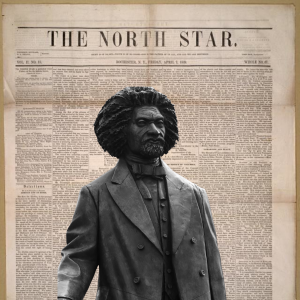From Page to Screen Week Eight: Begin Principal Photography
3 min read
Welcome to Week 8 of your book adaptation journey! This is a significant milestone as you finally transition from planning to action. It’s time to begin principal photography—the phase where your story comes to life on camera. In this guide, we’ll cover everything you need to ensure a smooth shoot, from managing the daily schedule to troubleshooting challenges on set.
The Importance of Principal Photography
What Is Principal Photography?
Principal photography is the phase where the majority of your film or TV series is shot. This is the most visible part of the production process and usually takes the most time and resources. All the preparation from previous weeks culminates here as the cameras roll, capturing the performances, scenes, and visuals that will eventually be edited into your final product.

Why It’s Crucial
1. Bringing the Story to Life: This is where your script transitions from words on a page to moving images.
2. Collaboration in Action: It’s the moment when all departments—cast, crew, direction, production—work together to create something tangible.
3. Pace Setting: A smooth principal photography sets the tone for post-production and the eventual release.
Managing the Daily Shooting Schedule
Staying on Track
The daily shooting schedule, also known as the “call sheet,” is the cornerstone of managing your time and resources effectively on set. Staying organized and following this schedule ensures that you complete each day’s planned scenes on time, avoiding costly delays.

Steps to Manage the Schedule
1. Daily Call Sheets:
– Every day, a call sheet should be distributed to the cast and crew. It outlines what scenes will be shot, where they’ll be filmed, and who needs to be on set.
– Include details like the day’s start time, location addresses, key contacts, and any special instructions.
2. Set Priorities:
– Prioritize the most complex or resource-intensive scenes early in the day when the cast and crew are fresh.
– Balance your schedule to avoid burnout—mixing challenging scenes with lighter ones.
3. Communication is Key:
– Hold daily briefings with key team members to ensure everyone is on the same page.
– Address any issues immediately to prevent them from derailing the day’s schedule.
4. Flexibility and Adaptability:
– Be prepared for unexpected delays—bad weather, equipment malfunctions, or even creative changes.
– Build some buffer time into your schedule to accommodate these unforeseen events without losing momentum.
Troubleshooting On-Set Challenges
Common Challenges and Solutions
No matter how well you plan, challenges on set are inevitable. Whether it’s technical difficulties, creative differences, or logistical issues, being prepared to troubleshoot effectively is essential.

1. Technical Difficulties:
– Problem: Equipment malfunctions, lighting issues, or sound problems.
– Solution: Always have backup equipment and a technical team ready to fix issues swiftly. Test all equipment before the shooting day begins.
2. Creative Differences:
– Problem: Disagreements between the director, cast, or crew about how a scene should be executed.
– Solution: Encourage open communication and collaboration. Hold discussions off-set if needed to resolve disputes without wasting time.
3. Logistical Issues:
– Problem: Locations aren’t ready, transportation delays, or weather disruptions.
– Solution: Have contingency plans for every location. Scout alternative locations and be ready to shift schedules if needed. Keep a close eye on weather forecasts and plan accordingly.
Keeping Morale High
Maintaining a positive and motivated atmosphere on set is key to overcoming challenges. Keep the energy high by:
– Recognizing Effort: Acknowledge the hard work of your cast and crew regularly.
– Providing Comfort: Ensure that the cast and crew have access to good food, comfortable resting areas, and a positive work environment.
– Encouraging Teamwork: Promote collaboration and camaraderie among team members to foster a sense of community.
Monitor Progress
Tracking Daily Progress
As you proceed with principal photography, keeping a close eye on the progress is crucial. You need to ensure that you’re on track both creatively and logistically.
1. Daily Reports:
– Have your production manager or assistant director prepare daily progress reports. These should include how many scenes were completed, any delays, and upcoming tasks.
– Use these reports to make adjustments to your schedule if necessary.
2. Review Footage Daily:
– At the end of each day, review the footage (also known as “dailies”) to ensure it meets the desired quality.
– Address any issues immediately so they can be reshot the next day if needed.
3. Budget Tracking:
– Keep track of your expenses to ensure you’re staying within budget. Adjustments may need to be made if unforeseen costs arise.







